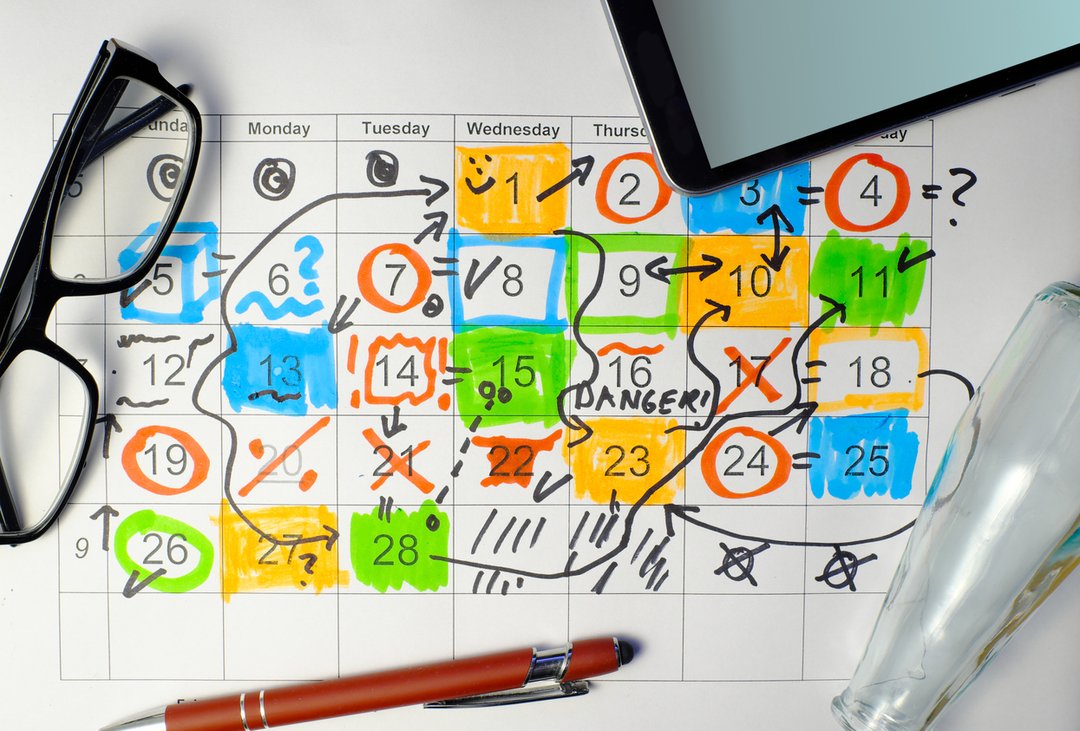
By Ray A. Smith
Oct. 26, 2023
Earlier this month, I decided to take on the challenge of a lifetime: Try a CEO’s morning routine for one day.

iStock image
On Tuesday, I was JPMorgan’s Jamie Dimon and up before dawn reading five newspapers, research reports and getting in a workout. On Wednesday, call me Nasdaq Chief Executive Adena Friedman. And on Thursday, I stepped into Hollywood executive Nathan Brown’s shoes.
Why did I torture myself? For you.
I write about workplaces and the people who run them. For years, chief executives have told me the energy, drive and creativity they get from their morning is what drives them.
Jonathan Mildenhall, co-founder and chair of global brand consulting firm TwentyFirstCenturyBrand, starts at 5:30 a.m. He makes coffee for his husband, styles his African-American daughter’s textured hair, works out, meditates in a sauna—twice—and takes a cold plunge, all before arriving at work at 9 a.m.
He told me he does this to recalibrate for the day. “Without it, my energy is off and that compromises how I show up for myself and for others,” he said.
And his conclusion is backed by a body of research that shows including exercise improves your memory, planning and focus. A disciplined pre-work regimen also primes you for an “optimal state” by the time you start interacting with colleagues, says Dolly Chugh, a social psychologist and management professor at New York University’s Stern School of Business.
But all of this felt too narrow. Sure, it improves your focus in the moment, but are you really that better off all day long? As someone who has been wiped out by noon from previous stabs at morning workouts, I had other doubts.
Maybe as Brad Stulberg, an executive coach and author of “Master of Change” told me: “It’s not so much a matter of what you’re doing, it’s more the act of having a routine where the benefit lies.”
With that in mind, I tried the three executives’ routines. Each regimen took some hacks to make it work, and it didn’t take long to veer off schedule.
Here’s what happened:
DAY 1: Jamie Dimon, JPMorgan Chase chair and CEO

Jamie Dimon PHOTO: JASON ALDEN/BLOOMBERG
Jamie Dimon, one of the most powerful men on the planet, has said he spends two hours predawn reading “tons of stuff”—five major newspapers, analyst and internal bank reports, even speech transcripts—followed by 45 minutes of aerobics, light weights or stretching.
Unfortunately for me, Dimon has said he’s just not that hungry early in the morning. I eat within an hour of waking, and tend to have a boiled egg, a yogurt, muffin or scone as my first breakfast.
This was just the beginning of my struggle with this schedule. After reading a few online stories from The Wall Street Journal, the New York Post and the New York Times (all part of Dimon’s news diet), I grew restless. Thoughts of my to-do list at work, then what my friends and favorite celebrities were up to, crept in. (I succumbed to scrolling Instagram, briefly, twice, somewhere between 5:30 and 6:30 and again at 6:52.)
I hadn’t lifted weights in so long that I had to Google how to use the adjustable set a colleague lent me. It was more strenuous and sweatier than I expected. Half an hour in, I switched to modified jumping jacks and light stretching for the remaining 15 minutes.
I had time for just two sips of coffee between drying myself off from a shower, moisturizing and getting dressed. My everyman’s town car, an Uber, was scheduled to arrive at 8:15 to chauffeur me from my New Jersey apartment to Midtown.
I arrived at the office nearly an hour later, held up by traffic. All the reading and exercising had perked me up. But my energy dissipated by 10:30. During a 1 p.m. staff meeting, I stood up fearing my eyes might close if I sat down.
Quick take: This setup might suit someone wanting a mix of quiet focus time and low-intensity workout. It probably doesn’t work for people getting young children out the door, or those with long driving commutes. My biggest hurdle was breakfast, or lack thereof. I’d cut the reading to one hour and add a snack, maybe fruit or yogurt.
DAY 2: Adena Friedman, Nasdaq chair and chief executive

Adena Friedman PHOTO: HOLLIE ADAMS/BLOOMBERG
Adena Friedman starts most days with up to one hour on the Peloton listening to high-energy pop music. Then it’s a breakfast of oatmeal, granola, fresh fruit and coffee before getting to the office by 8 a.m.
I don’t own a Peloton so my workaround was an exercise bike at the gym, a 10-minute walk away, which helps explain why I was 30 minutes late to the office. But I’m getting ahead of myself.
I arrived at the gym just before it opened at 6 a.m. and hopped on a spin bike. My playlist included Radiohead’s “Everything in Its Right Place,” and Soul II Soul’s “Back to Life.” I was instantly energized, so I switched to a stationary bike that tracked distance and rode about 4 miles at a moderate speed. I enjoyed, rather than endured, it and worked up a decent sweat. I walked home invigorated and psyched about the day. The sunrise between entering and leaving the gym lifted my mood, too.
Once home, though, the clock was ticking. I assembled my oatmeal, granola, strawberries and coffee. Now it was 7:20 and I had to get to work by 8 a.m. via a bus from New Jersey. I had just enough time to inhale two strawberries, a spoonful of oatmeal and three sips of coffee before flying out the door at 7:40.
The Lincoln Tunnel crush of cars got me to the office a half-hour behind schedule, yet early enough to grab a free bagel before they were gone. (Wednesdays are bagel days at the Journal.)
The shorter morning routine and high-energy workout gave me a pumped-up feeling that lasted into the afternoon. I worried I’d be tired by noon and need an afternoon shot of espresso, but I found myself multitasking and inspired to start projects I’d been procrastinating on.
Yet, I arrived at the office hungry and late.
Quick take: This routine can work if you have a Peloton or stationary bike at home, and can save yourself an extra trip to or from the gym. It also helps if you aren’t getting children ready for daycare or school, or can alternate those duties with a partner.
The regimen helped me be more energetic, productive and focused. Still, I’d have to condense or start it earlier to get to work on time.
DAY 3: Nathan Brown, partner at Range Media Partners

Nathan Brown PHOTO: MATTHEW TAKES
Nathan Brown’s alarm goes off at 6 a.m., which wasn’t terrible since mine is always set for 6:30. He meditates, then makes a double espresso for himself and breakfast for his young son. By 7 a.m. he is running 3 to 5 miles or starting a session with a private trainer.
I tried to meditate but was distracted by the itch to catch up on emails or the latest news from colleagues or competitors. Maybe it would have worked better if I’d used a guided-meditation app, like Headspace or Calm, or brushed up on meditation tips.
I substituted strong coffee for the espresso and scrambled some eggs. After a few sips, I headed out for a 1-mile jog to a lovely park, then a 1-mile lap around its lake. The plan was to run a third mile home but I ended up walking half of the way back. (Where was that runner’s high everyone swears by?) This was definitely the most strenuous of the three workout routines.
I was sweaty and spent, and wished I had time to recover before prepping for work. There was no time. I rushed to my car and drove to Manhattan with NPR’s “Morning Edition” on the radio. Traffic wasn’t as bad as Los Angeles’s notoriously bad congestion, but I’m a public-transportation kind of guy and quickly got frazzled.
Brown told me has a reserved parking spot at his company—I definitely don’t. Circling Hell’s Kitchen streets in vain, I finally drove into a parking garage. The dashboard clock showed I was 30 minutes late.
The tense drive, plus the intense workout, made me lightheaded at this point. Brown fasts between 7 p.m. and 11 a.m., an interminable stretch for me. Around 11:10, I tore into a bowl of roast chicken with basmati rice and veggies like I hadn’t eaten in days.
Now I had sustenance. I got work done, and I wasn’t as tired as I‘d feared. Amazingly, I had no caffeine cravings by 3 p.m.
Quick take: Brown’s routine made me more energetic if not as focused as I was after Friedman’s routine. Still, I’d try a shorter meditation and run—not only to make it to work on time but to avoid getting worn out.
The Verdict
Friedman’s routine worked best for me. The Peloton-ish workout with bouncy music was the easiest for a morning-exercise novice like me because it felt more like dancing than working out. More important, at least for me, was that I could start eating by 7:30. It all felt adjustable in a way that could possibly work for my own morning schedule.
With practice, any one of these routines could work for you. Just know it may mean sacrificing some sleep, at least until you get accustomed to waking before 6. By experimenting, you’ll find the combination that yields peak benefits while still being feasible.
I suspect I’ll keep exercise out of my morning routine, considering the physical demands and the stress of rushing to make it work on time. Maybe I’m not built to be a CEO. Or, maybe I’ll try the ultimate power move, working out during the workday. Or just putter around in the morning, like Jeff Bezos.
Is it time for breakfast yet?
Write to Ray A. Smith at Ray.Smith@wsj.com
Dow Jones & Company, Inc.



